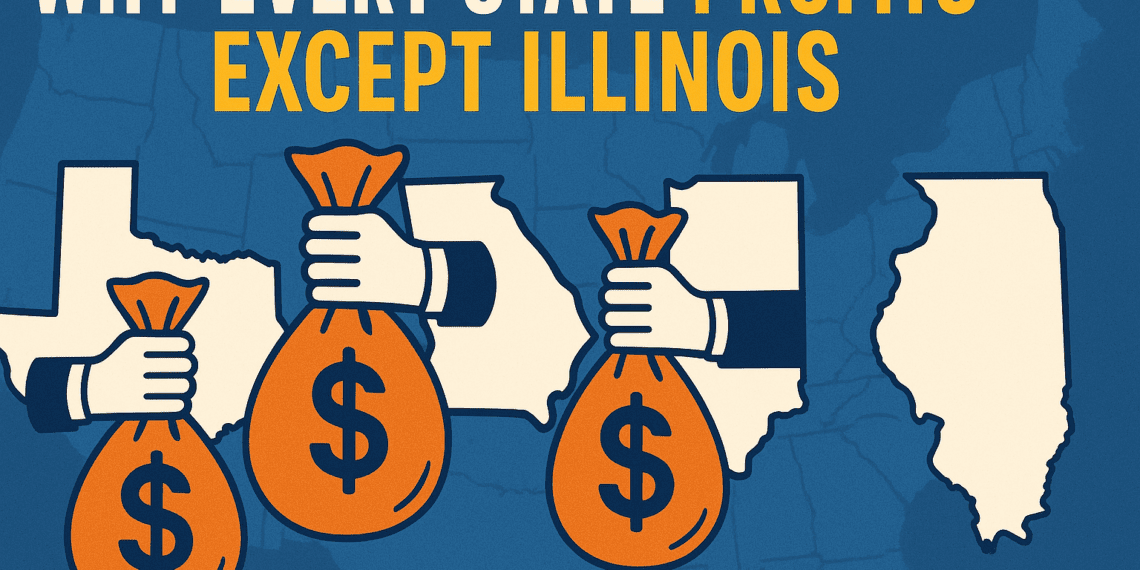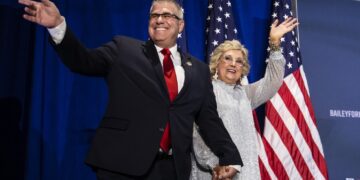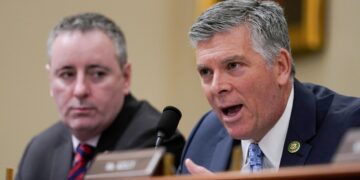Across the country, American factories are reopening. Companies are returning home. Jobs are being created.
Under Donald Trump’s leadership, U.S. manufacturing is seeing a revival. Tariffs on foreign goods, tax incentives for domestic production, and fewer federal regulations have caused a shift. Major corporations are pulling operations out of China and Mexico and bringing them back to American soil.
Kentucky. Alabama. Indiana. Texas. South Carolina. These states are attracting billions of dollars in new manufacturing investments. Thousands of new jobs are being created.
But Illinois is being left out—and Governor JB Pritzker’s tax-heavy policies are a major reason why.
On June 26, 2025, GE Appliances announced it will invest $500 million to move washing machine production from China to Louisville, Kentucky. That move alone will bring 800 new jobs. It’s one of many examples of U.S. manufacturing growth—just not in Illinois.
Volkswagen is expanding its plant in Tuscaloosa, Alabama. BMW is boosting output in Spartanburg, South Carolina. Honda is relocating hybrid vehicle production to Greensburg, Indiana. Georgia’s Hyundai plant is scaling up to produce 500,000 electric vehicles per year. Texas is gaining a new $85 million server plant from a Taiwanese company. Even California is getting a Novartis pharmaceutical facility.
But Illinois—once the heart of American industry—has seen none of this.
The only notable development is Stellantis reopening its Belvidere plant by 2027, but that’s not foreign investment—it’s simply a reshuffling of existing production. Illinois is being bypassed entirely in the race to rebuild American manufacturing.
Why?
Because companies are avoiding Illinois due to high taxes, endless red tape, and a hostile business climate under JB Pritzker.
In 2025, Governor Pritzker approved a new corporate income tax hike disguised in a budget bill. Illinois’ flat corporate tax rate remains 9.5%, but new “apportionment” rules and GILTI taxes (Global Intangible Low-Taxed Income) mean multistate businesses are now paying more on income earned elsewhere. These rules effectively punish companies that operate in more than one state.
At the same time, Illinois has one of the highest property tax rates in the nation—1.95% on average. Add in a combined state and local sales tax rate of 8.86%, and businesses are facing a steep cost of operations.
Then there’s the fuel tax, which has increased every year since Pritzker signed his massive infrastructure plan in 2019. The current state gas tax sits at 45.4 cents per gallon—more than double what it was in 2018. And it’s indexed to increase automatically every July 1. Businesses that rely on shipping or trucking are taking a direct hit.
Illinois also taxes diesel at 52.9 cents per gallon—again, among the highest in the country. Transportation costs are a major factor for manufacturers choosing where to build.
Meanwhile, over 282,000 state regulations remain on the books—more than nearly every other state. Occupational licensing requirements are also high, limiting access to the labor market.
The result? Illinois ranks 46th in business tax climate (Moody’s), 44th in economic growth (Illinois Policy Institute), and continues to lose population. In 2024 alone, 56,000 people left the state—despite an influx of migrants.
Big companies have already pulled the plug.
Boeing left. Citadel left. Tyson Foods left. The New York Stock Exchange shut its Chicago office after 143 years. Even hedge funds and mid-sized firms have quietly shifted to states like Florida and Texas.
Illinois’ tax and regulatory system is not only expensive—it’s unpredictable. In 2025, Pritzker’s administration imposed retroactive tax increases on foreign income, including 50% of GILTI, sparking backlash from tax policy groups. Analysts warned this would send a “chilling message” to investors.
Pritzker’s approach to business has also been combative. In April 2025, during a speech in New Hampshire, he called for “mass protests” against Republicans and said conservatives “should not know a moment of peace.” His rhetoric signals to job creators that Illinois is not a place where they’ll be welcomed or supported.
Instead of focusing on reforms, Pritzker has continued to grow the size of government. The number of state employees has increased, while private sector jobs have flatlined. Illinois’ pension crisis remains unresolved. With only 51% of liabilities funded, the state has more than $13,000 in state and local debt per resident.
All of this weighs on the state budget—and leads to more taxes on businesses and families.
Meanwhile, nearby states are doing the opposite.
Indiana, for example, maintains a simpler tax code and offers incentives for manufacturers. Kentucky and Georgia have created special zones for investment. Texas has no income tax at all—and is gaining tech and manufacturing projects at a rapid pace. South Carolina and Alabama have streamlined permitting and licensing to attract major automakers.
Illinois isn’t just behind. It’s losing ground.
The national manufacturing revival is real. President Trump’s 2025 trade and tariff policies have pushed the average U.S. tariff rate to 15.8%. This makes foreign production more expensive and gives U.S.-based facilities a competitive edge.
States that welcome business are seeing new plants, more jobs, and economic growth.
Illinois is seeing the opposite: business exits, tax hikes, and economic stagnation.
The state has the infrastructure. It has the talent. It has the location. But under JB Pritzker, it does not have the leadership or policy direction to compete in a pro-growth economy.
Unless Illinois reduces its tax burden, simplifies its laws, and rolls back the hostility toward employers, it will continue to be left out of the country’s manufacturing comeback.
The message from business leaders is clear: Illinois is too expensive, too unpredictable, and too political.
And they’re taking their jobs elsewhere.









